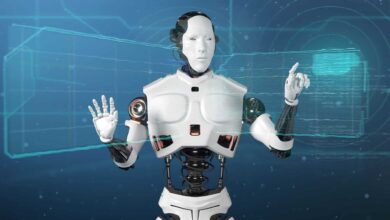How Artificial Intelligence Works: A Comprehensive Guide

Artificial Intelligence (AI) has become an integral part of our daily lives, revolutionizing industries and transforming the way we interact with technology. But what exactly is AI, and how does it work? In this comprehensive guide, we’ll dive deep into the world of artificial intelligence, exploring its definition, types, techniques, and applications. We’ll also answer some frequently asked questions to help you better understand this fascinating field.
What is Artificial Intelligence?
Artificial Intelligence refers to computer systems designed to perform tasks that typically require human intelligence, such as visual perception, speech recognition, decision-making, and language translation. AI systems can learn from experience, adapt to new inputs, and perform human-like tasks by processing vast amounts of data and recognizing patterns.
Types of Artificial Intelligence
AI can be categorized into two main types:
- Weak AI (Narrow AI): Focuses on specific tasks and is designed to perform a particular function, such as facial recognition or speech recognition.
- Strong AI (Artificial General Intelligence): Aims to replicate human-like intelligence and can perform any intellectual task that a human can. Strong AI is still in the theoretical stage and has not been achieved yet.
How does Artificial Intelligence Work?
systems work by combining large datasets, intelligent algorithms, and iterative processing to learn from patterns and features in the data. The process involves several key techniques:
Machine Learning
Machine learning is a subset of AI that enables systems to learn and improve from experience without being explicitly programmed. There are three main types of machine learning:
- Supervised learning: The AI system learns from labeled data and makes predictions based on that knowledge.
- Unsupervised learning: The AI system learns from unlabeled data, discovering hidden patterns, and structures on its own.
- Reinforcement learning: The AI system learns through trial and error, receiving rewards or penalties for its actions, and adjusting its behavior accordingly.
Deep Learning
Deep learning is a more advanced form of machine learning that uses artificial neural networks to process information. These networks are modeled after the human brain and consist of multiple layers of interconnected nodes. Deep learning allows AI systems to learn and make intelligent decisions on their own by processing data through these complex networks.
Natural Language Processing (NLP)
NLP is a branch of AI that focuses on the interaction between computers and human language. It enables AI systems to understand, interpret, and generate human language, making it possible for machines to communicate with humans more naturally.
Computer Vision
Computer vision is an AI technology that allows computers to interpret and understand visual information from the world around them. It enables AI systems to perceive and analyze images, videos, and other visual data, making it possible for machines to recognize objects, faces, and scenes.
Applications of Artificial Intelligence
AI has numerous applications across various industries, including:
- Healthcare: AI assists in diagnosis, drug discovery, and personalized treatment plans.
- Finance: AI helps detect fraud, automate trading, and improve risk assessment.
- Retail: AI powers personalized recommendations, chatbots, and supply chain optimization.
- Manufacturing: AI enables predictive maintenance, quality control, and robotics automation.
- Transportation: AI is crucial for developing autonomous vehicles and optimizing routes.
The Future of Artificial Intelligence
As AI continues to evolve and advance, it has the potential to revolutionize countless industries and transform the way we live and work. However, the development of AI also raises important ethical concerns and challenges that need to be addressed, such as job displacement, privacy issues, and algorithmic bias.
To ensure the responsible development and deployment of AI, collaboration between researchers, policymakers, and industry leaders is crucial. By working together, we can harness the power of AI to benefit society while mitigating its potential risks.
Frequently Asked Questions (FAQs)
What is the difference between AI and machine learning?
AI is the broader concept of creating intelligent machines, while machine learning is a subset of AI that focuses on enabling machines to learn from data without being explicitly programmed.
Can AI systems think like humans?
While AI systems can perform tasks that typically require human intelligence, they do not think or reason like humans. AI systems process and analyze data based on algorithms and statistical models, whereas human thinking involves emotions, intuition, and consciousness.
Will AI replace human jobs?
AI has the potential to automate certain tasks and change the nature of some jobs. However, it is more likely that AI will complement human workers rather than replace them entirely. As AI takes over routine tasks, humans can focus on higher-level, creative, and empathetic work.
How can businesses benefit from implementing AI?
Businesses can benefit from AI in numerous ways, such as automating repetitive tasks, improving decision-making, enhancing customer experiences, and uncovering valuable insights from data. AI can help businesses become more efficient, productive, and competitive in their respective markets.
What are the ethical concerns surrounding AI?
The development and deployment of AI raise several ethical concerns, including privacy issues, algorithmic bias, job displacement, and the potential misuse of AI for malicious purposes. It is crucial to address these concerns and develop ethical guidelines for the responsible use of AI.
Conclusion
Artificial Intelligence is a transformative technology with the potential to revolutionize industries and shape the future of humanity. By understanding how AI works, its various applications, and the challenges it presents, we can better prepare ourselves for the AI-driven future ahead.
As we continue to develop and deploy AI systems, it is essential to prioritize responsible innovation, collaboration, and ethical considerations. Only by working together can we harness the full potential of AI to benefit society and create a better future for all.




